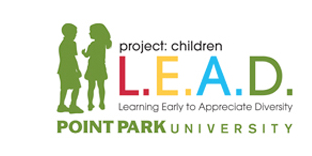Lesson 2: The Mighty Oak Diversity Integrated Lesson Series

The Mighty Oak
Teacher: Dr. Connie Craven
Project Children L.E.A.D. Director: Dr. Vincenne Revilla Beltran
Subject Area: Diversity Integrated with Science and Art
Grade level: K-1, and 3
Length of Lesson: 30-165 minutes
Download a printable version of Lesson: The Mighty Oak in PDF format (requires Adobe Reader)
Description:
This lesson will utilize an original story to dramatize that differences in physical traits do not change important characteristics dealing with feelings, needs, worth, and qualities that make us who we are. Through questioning, summarization, and other activities, diversity will be treated with sensitivity to develop respect for differences. In science the differences between deciduous and conifer trees will be illustrated along with the attributes of changing seasons, cycles, and parts of the tree.
Resources:
The Mighty Oak, pictures depicting the story, art paper, crayons, acorns for planting, area for a field walk/ talk.
Basis for the Lesson:
A child's developmental age is one of the most important factors in considering discussions of diversity, prejudice, discrimination, and respect. According to the tenets of Equal Opportunity, Title V and Title IX of the Federal Discrimination legislation, equal opportunities must be provided regardless of physical or mental differences.
Kindergarten students are at a stage where they begin to build group ethnic identity as well as individual identity. They can begin to explore the ideas of respect for differences considered racial, ethnic, physical, and cultural.
Kindergarten students also accept the use of categories and seek to know where they fit when considering similarities and differences.
This lesson incorporates the Pennsylvania Standards for Science and Technology: 3.1.4 A . Know the similarities and differences of living things; 3.1.4 C. Identify changes in living things over time; 3.1.4 D. Know that living things are made up of parts that have specific functions, 3.8.4 C. Illustrate patterns that regularly occur and reoccur in nature.
Included in this lesson are the "Thematic Topics" developed at the Laboratory School of Point Park University to teach Diversity: Getting to Know You, I am Special You are Special, and Physical Differences.
|
Scope and Sequence/Activities |
Minutes |
| 1. Read story to students | 15 |
| 2. Children act out story for grade three buddy match | 20 |
| 3. Discussion Questions Who was different in the story? How were they different? Was it bad to be different? How did Oakey's differences make him special? Did the Pines respect Oakey's differences? Did Oakey respect the Pine's differences? How are students in the class physically different from each other? Do these differences matter in how we treat each other? Should these differences be respected? |
15 |
| 4. Students complete an art project depicting Oakey and the Pines. | 20 |
| 5. Grade three students act out story of the Sneetches by Dr. Suess for the kindergarten study buddies, then discuss the questions in #3. | 40 |
| 6. Kindergarten and Grade Three Study Buddies plan a make-believe party to celebrate diversity: They will make a list of who will be invited, what will be served, what activities will go on, and rewards. (Assessment) | 15 |
| 7. Each "buddy group" will report plans to the whole group. | 20 |
| 8. Walk/talk field trip on the grounds of the school. Look at the differences between pine trees and oak trees, and other deciduous and coniferous trees. If an acorn can be found, plan an "Oakey" planting ceremony. (This would be a good exercise for the K & 3 Buddies) | 20 |
Adaptations for Learning Support Students:
Categorizing M & M's by color, and then tasting, categorizing different shaped pasta, read story and act out parts again.
Adaptations for Gifted Students:
As a group, make up story about differences in flowers, dogs, fish, birds, etc., Illustrate story. Make a leaf collection of different oak leaves and pine needles.
Enduring Understandings:
Demonstrate appreciation and respect for diversity and physical differences; Illustrate that similarities are more important than differences; Stress the similarities and differences of deciduous and coniferous
trees, Identify the parts of a tree and a forest; Show how seasons are part of a cycle of natural changes; Encourage collaboration and cooperation among students and through the "Buddy Program" between students in kindergarten and grade three classes.
How far you go in life depends on your being
tender with the young, compassionate with the
aged, sympathetic with the striving, and tolerant
with the weak and the strong. Because someday
in your life, you will have been all of these.
--George Washington Carver

